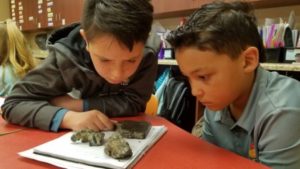“You can’t just give someone a creativity injection. You have to create an environment for curiosity and a way to encourage people and get the best out of them.”
– Ken Robinson
At Athlos Academy, we focus on teaching children the importance of 12 traits that we call Performance Character traits. Our Performance Character pillar recognizes the deep connection between these traits and success. The development of Performance Character is integrated into every learning opportunity, allowing students to experience this connection first hand. Traits like humility, integrity, courage, and curiosity become a lens through which students view their learning as about more than grades, but as learning for life.
Like all important lessons, reinforcing learning at home is a key factor to success. One of the best ways for parents to do this is to positively model the traits at home and encourage trait development. In our 12-part ‘Performance Character at Home’ blog series, we offer simple, yet effective, ways to support children’s Performance Character development. In this blog, we look at curiosity.
 What is curiosity?
What is curiosity?
Athlos defines curiosity as finding wonder and passion in the experience of learning.
Why is curiosity important?
Curiosity is closely connected to other Performance Character traits like initiative and creativity. Children are naturally curious, and there are plenty of reasons for us to support their curiosity. Studies show that children who are curious ask more questions and are more willing to seek out answers. It’s this simple desire to explore the unknown that has led many individuals to make great discoveries for the world and for themselves.
How can I help my child develop curiosity?
Children are notoriously curious, it’s an innate trait they often take throughout their lives, so it’s important for adults to encourage it whenever possible.
Here are a few things you can do to help foster this trait at home:
- One of the best ways to cultivate a child’s curiosity is by taking them on small adventures and giving them the breathing room to explore. These little adventures will vary and can be tricky to plan, so making a list and researching ahead might be necessary. One excellent resource is the book 50 Dangerous Things You Should Let Your Kids Do by Gever Tulley.
- Researchers have found that curiosity prepares the brain for learning and even helps it better retain the knowledge of things we typically wouldn’t find interesting or important. When your child asks “why,” try to engage them in a discussion about their own thoughts and ideas on the topic, and be willing to share your own perspective where needed. As we encourage curious behavior, children will not only start to crave learning, but they will develop a better memory as well.
- Showing genuine interest in a child’s discoveries helps ignite the same regions of their brain as when they are experiencing a reward or positive emotion. As children become older, take advantage of their curious phases, be supportive, and become an active listener. The more you show interest in your children’s discoveries, the more they will instinctively develop their curiosity.
- Sometimes children ask questions that are hard to answer. These are perfect opportunities to help your child understand that there are experts all around them they can ask. Do some research. Ask a teacher or a librarian. You’ll be amazed at just how willing experts are to talk with children.























